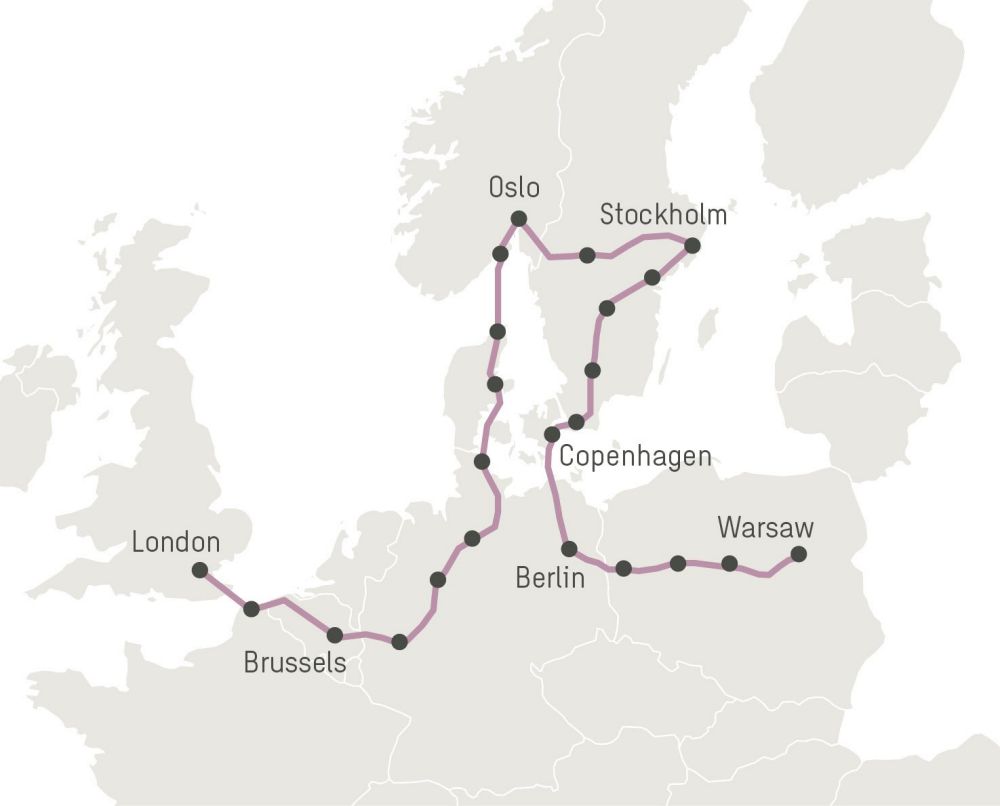
European road trip in electric car is no simple feat
Completing a road trip through Europe in an electric car is by no means simple, according to the German engineer Tim van den Maagdenberg. It's all about planning, planning and yet more planning, according to his travel blog.
So how about electrically powered driving in a borderless Europe? Van den Maagdenberg took up the gauntlet and set off from his home in London early this year, together with his family. His trip of more than 4000 km took him from London to Scandinavia, finally ending up in Warsaw. And so the family travelled through countries that all claim to promote electrically powered driving, as Van den Maagdenberg was aware. Be aware, this is how his story has been written. The trip itself was never made, but is imaginary and composed from all available information and travel stories on how to charge your electric car in different European countries and cities.
The electric car in question had a driving range of 200 km. While this is somewhat limited in comparison with the latest standards, it should have been manageable, according to Van den Maagdenberg, an energy specialist employed by the Sweco engineering firm. Yet it was hard work.
No integration
To start with, a separate app is required for each country in order to find the charging stations. And each country has its own payment cards for the charging facilities. It's starting to feel like the pre-euro period, when individual currencies were needed for each country, necessitating a visit to an exchange office.

The electrically powered adventurers were faced with their first serious challenge in Cologne. The city hardly has any charging stations at all, let alone one with the correct type of connection. 'E-mobility does not have priority in Germany,' Van den Maagdenberg was informed by a Tesla driver he met at a charging station.
To keep the kids happy, their next stop was Legoland in Denmark. There were express charging stations available, but only with the Danish style connection, which was once again tricky.
Credit sporadically accepted
The trip continued via Oslo to Stockholm, and they were yet again confronted with not only needing various apps and subscription cards for each country, but also with variations between the different types of charging station. Sometimes an app was enough for a charge, sometimes a card, and sometimes you needed both. General means of payment such as a credit card are sporadically accepted.
Stockholm was a breath of fresh air for Van den Maagdenberg, with plenty of charging stations available at restaurants, hotels, car parks, etc. In the end, the family arrived in Warsaw, after 25 charging sessions. Van den Maagdenberg kept an accurate record of the time spent on each session, not for the actual charging, but to organise the process of charging, such as the use of conversion connectors and the purchase of charging cards. It took him a total of 12 hours at charging stations and 2 hours when charging via an electric socket.
The obvious conclusion is that serious improvements are needed in the charging infrastructure. Top of Van den Maagenberg's list: ensure harmonisation of connectors and payment systems, charging needs to be made just as simple as filling up with traditional fuels.
The complete travel blog can be found on the Sweco website.
Opening photo: charging stations at the Potsdamer Platz in Berlin. Photo: WikiCommons.
If you found this article interesting, subscribe for free to our weekly newsletter!






